Kitchen finishes of the next decade?
Since I am in a MCM frame of mind I have been looking at new introductions and currently available colors and finishes that are outside the norm.
This Kohler finish has been around for a while but they offer it on the Karbon, one of their most expensive faucets:
{{gwi:1918203}}
Kohler Sandbar sink with brass strainer:
{{gwi:1918204}}
Caesarstone "Linen", a new introduction:

Mocket Drawer Pull in English Antique
{{gwi:1918206}}
Plain and Fancy says this is one of their most requested doors, (Transisitions in Walnut):
{{gwi:1918207}}
And these finishes appeared on one of their perennial doorstyles:
{{gwi:1918208}}
{{gwi:1918209}}
One of the limited color choices from the recently re-introduced St. Charles Cabinetry (through Viking). Notice not only the matching powder-coated pull, but the color of the floor...
{{gwi:1918210}}
Comments (135)
liriodendron
12 years agolast modified: 9 years agoIt's not the year that chintz room was created or its over-all layered, traditional style or even any particular element in it that's problematic. What's wrong with it is the fact there is way, way, too much of one element - to the point of being caricature. Even in the 80's that much matching chintz would have stood out as a design solecism to me.
Keep the curtains; lose the matching wall paper; get the sofa-matching chintz off the slipper chair and the fauteil. Whether the two sofas are covered in the identical print as the curtains is hard to tell. It's likely they are at least in a different fabric (the typical glazed chintz of curtains not being a particularly suitable fabric for sofas), so possibly the prints don't match either, which would be a good thing. After removing a lot of the extraneous chintz-ness, you could decide if having both sofas and curtains in a closely matched pattern was still too much, or just right.
in the end you'd be left with a pretty room of a recognizable style. Certainly not eveyone's cup of tea, but broadly popular with many people over long periods -maybe many decades, not just the 80's.
The problem of the SGTG kitchen is that it was a hugely successful stage set that managed to animate itself and leap right off the screen into a style niche of the current era. The set designers chose those particular elements to undergird the story and the totality of the movie apparently resonated. It's not just here on GW/KF, it's widely imitated in both high end and midmarket shelter mags. And that's where the banality of it starts to creep in. Anything repeated over and over looses its freshness and appeal. (See chintz, above.)
When that happens, no matter how great the design initially was, it becomes d-d-d-d-dated. Which is the correct description of anything that because of repetition and ubiquity becomes associated with a certain time period. Dated has nothing to do with the inherent quality of the design (although anything too popular is bound to collect clumsy copies which accelerate the transition to the status of being passe). Until, of course it comes around again in some form, as most things do. With luck it will emerge improved. And hopefully, dis-bound from its former associations so it will appear novel and, once-again, appealing.
This is thread devoted to kitchen finishes, but JohnLiu touched on another very interesting question to me: how will kitchen functions change over the next decade? Sure they will still be nominally the locus of meal creation, but will the idea of kitchen-as-social-entertaining-space endure? Will food preparation as the primary function begin to re-emerge (JohnL's working kitchen)? How would that change the size, fitments, and eventually, of course, the decorative desiderata of future kitchens?
L
marcydc
12 years agolast modified: 9 years agoI have friends who married in the 80s and forced their bridesmaids to wear chintz gowns with enormous bows on the backside, dropped waists and sweetheart necklines.
Hey! I resemble that remark! You forgot about the poofy sleeves! Although I did choose a slightly pastel water color looking chintz instead of the bold roses :)
I also had to walk down aisle in someone's wedding wearing a peach taffeta with a bow on the back that was so large it needed support. (as did our hair which we spent hours on with the curling iron ).
Related Professionals
Frankfort Kitchen & Bathroom Designers · Knoxville Kitchen & Bathroom Designers · Moraga Kitchen & Bathroom Designers · North Versailles Kitchen & Bathroom Designers · Pleasanton Kitchen & Bathroom Designers · East Tulare County Kitchen & Bathroom Remodelers · 20781 Kitchen & Bathroom Remodelers · Green Bay Kitchen & Bathroom Remodelers · Overland Park Kitchen & Bathroom Remodelers · Patterson Kitchen & Bathroom Remodelers · Bon Air Cabinets & Cabinetry · Homer Glen Cabinets & Cabinetry · Saugus Cabinets & Cabinetry · Rancho Cordova Tile and Stone Contractors · Bloomingdale Design-Build Firmspalimpsest
Original Author12 years agolast modified: 9 years agoI understand where you are coming from in terms of innovation driven kitchens Marcolo...I will give you my opinion on why this isn't happening a little later. I also wish it would drive design more.
louisianapurchase
12 years agolast modified: 9 years agoI agree L. I think you have described very well why things date. It's the same thing with music. A great song comes out and invariably the radio stations play it into the ground to where it just becomes noise. Then you hear it a couple of years later and think "oh there is that great song again."
I believe this is just how our minds work regardless of the medium. In fact, I think for most this is true of many things like music, decor, food, etc. It reminds of me of Econ 101 and the law of diminishing marginal return.
ptamom
12 years agolast modified: 9 years agoI fell in love with this at a home show. It is very substantial. I plan on putting it in my new kitchen. Unfortunately, the have discontinued the line. Something different. It didnt catch on this time.....
Here is a link that might be useful:

marcolo
12 years agolast modified: 9 years agoThe problem of the SGTG kitchen is that it was a hugely successful stage set that managed to animate itself and leap right off the screen into a style niche of the current era.
Yes, as a kit. It's not just that people saw one element, like soapstone, and adopted it. No, The One True Kitchen must be adopted completely, whole and undivided as God intended; the cafeteria renovator, like the cafeteria Catholic, is regarded as a heretic or apostate. This is what has driven that look into the ground. You see it in every kitchen mag and it's become boring.
What's interesting is that there isn't any new kit. No other kitchen has recently jumped off the screen into real life, and I can't think of any likely contenders. It's cohesive look that tends to get adopted quickest, rather than individual elements that people have to figure out how to assemble on their own.
plllog
12 years agolast modified: 9 years agoI think with every movement, there's a slow build to the universality. The One True Kitchen actually has several seminal sources that created it, and it was just SGTG that did the missionary work of getting a copy of it into everybody's hands.
I also think that it's the quality of the story telling that focuses on the kitchen that made SGTG such a touch point. It's not that there haven't been other wonderful movie kitchens that people have used for inspiration. It's that the storytelling caught up a lot of people and pushed the kitchen in that movie to the forefront. Add that to the fact that the emotional journey could be a metaphor for the emotions of remodeling, and it's one off.
I do wonder, however, if the open kitchens movement wasn't helped along quite a bit by stage set TV shows where having all the action really in one room made for a much easier shoot. :)
I haven't joined in so far, because the next decade is so not me. I don't like a lot of what's being offered in new kitchens. I totally looked to the past to inform my decisions. There's new in technologies, but a lot of old in design attitude, and a lot of rejection of current trends.
roarah
12 years agolast modified: 9 years agoI am liking that there is no new kit. I never buy the entire show room of furniture and I like an "added to over the years" look in rooms. Maybe we will now see all different styles and colored kitchens soon. I hope the kit kitchen is a thing of the past and than maybe style will not date as quickly. Unfortunetly I think there will be a new different kit that the masses will eventually follow and install exactly as the orginal. Hope it is at least as tastefull as the SGTG kit orginally was.
beekeeperswife
12 years agolast modified: 9 years agomarcolo
12 years agolast modified: 9 years agoIt's that the storytelling caught up a lot of people and pushed the kitchen in that movie to the forefront.
I think every successful design movement is about storytelling. Bauhaus--modernism for the masses, the egalitarianism of design, the socialist teapot. Arts & Crafts--a romanticized respect for the human hand. Art Deco--the speed of the machine, speeding us into the future. MCM--freedom from the ruin of war, free to rebuild the modern age.
The One True Kitchen was about a return to the mythic past, a well-stocked larder, grandma's pies and preserves, a (fictional) family gathered 'round shelling peas--whereas in reality, they are all off at separate soccer practices and Pilates classes.
This is where a return to the '80s really rankles. What were the design stories of the '80s? There were several. Wall Street's "greed is good"--that was the message of the gold finishes and pink marble. There was the birth of the yuppie, with wooden dish drainers in every yup kitchen. There was Memphis and the like--the '80s was the last time the avant-garde had a major impact on pop culture.
So which of these messages would a revival of the '80s signify, other than we're completely out of ideas?
palimpsest
Original Author12 years agolast modified: 9 years agoI was taught in my art history course that there is a stasis in art because there is no new medium to express oneself through and the old media were reduced to minimalism. There was hope for digital (in animation) but it has too ubiquitous to be taken seriously, except as a replacement for film cameras in classic photography. There are some artists doing some interesting stuff with typography, patterning and fine art.
I was told that the stasis in furniture design is an outgrowth of the lack of new but inexpensive materials technologies to make furniture out of. There are some interesting new high tech materials but they are not inexpensive like the last big sweeping changes like pressed plywood, fiberglass or foam. ---There are some great plastics and polycarbonates but people consider them outdoor furniture.
The Memphis Movement was a response to this stasis. Crooked shelves that wouldn't hold things , glass chairs , the penis shaped vase--the practical turned impractical. It was a joke that people took seriously (Check out the LR in Ruthless People). I would have a Memphis Carlton bookcase if I had the cash myself, though
And, people haven't embraced the new materials in residential design. Translucent Corian that changes color when backlit, liquid crystal floor tile that shows footprints like a mood ring, Dichroic glass...felted textiles--most people just don't like it.
So there are ideas out there, but not ones that people like enough to embrace. These are used commercially, but no one seems to want it at home.
roarah
12 years agolast modified: 9 years agoI grew up in the eighties and I have a different story than greed and yuppies and do not see it as a lost decade. I remember it as a time of hope after a very long and bad bout of economic stress. the late 70's to 81 saw unemployment rates of 11+ percent in the us and above 13% in parts of europe. We could only purchase gas every other day according to our license # and the gas lines were long. This was compounded by a fear of the cold war.
What i remember of the eighties was a rebirth of hope, the end of the cold war along with the demise of the Berlin wall. HBO playing rated r movies only after 8pm. The birth of music videos and later the premire of thriller on mtv. John Hughes movies. The goonies etc. The decor was, I believe, much nicer than the decade before and the music too! So yes the mainstream theme may have been excess but as a young girl I saw this as hope and a promise of better times to come. And again I do not think we will see a total 80's remake in decor. But maybe the hope of better times will prevail now after another period of recession, unemployment and real wars.
louisianapurchase
12 years agolast modified: 9 years agoRoarah, I think you are my long lost twin. That is how I feel about the 80's. You have made my heart sing. Oh how I wish I could go back just for a moment. There are so many great things about the 80's that I could add to roarah's list. I do have to say though I do love 70's music.
For some reason, your reference to HBO though made me think of the Iran-Contra hearings and why they had to be on tv all freakin day! Oh how my friends and I suffered through that summer when it was too hot to be outside even swimming.
Ironically enough, things like the history of the Iran-Contra Scandal are things I enjoy reading about now in my free time. Damn maturity!
harrimann
12 years agolast modified: 9 years agoHere's the precursor to the "Something's Gotta Give" house. It's the "Baby Boom" house. Same lead actress. Same writer. Produced in 1987. You have to scroll pretty far to get to the kitchen photos, but you'll see that they aren't terrible looking.
Here is a link that might be useful: baby boom house
palimpsest
Original Author12 years agolast modified: 9 years agoMarcolo...what I want to know is what you would have it look like? (especially with the relative lack of applicable new technology)
-----
Here is the other reasons things repeat or stay the same, and back to kitchen examples.PEOPLE ARE AFRAID OF INNOVATION.
WHY?
BECAUSE SOMETIMES IT LEADS DIRECTLY TO OBSOLESCENCE.
And then what do you do with the kitchen you built around it.
These did not work, especially the freezers. I knew two people that had these. One family had a freezer in the basement and had to remodel the whole kitchen when it gave out. The other had a turquoise metal cabinet with wire shelves for dishes and stuff.(This) and a fridge in the service porch.
What would you do if you built a small kitchen around this and part of it failed?
{{gwi:1614099}}What about this Gaggenau cooktop that pulls out?
They stopped making this, what if that was your ventilation?
{{gwi:1918241}}What about this? These ovens were used in ceramics technology first--and the elevator makes a lot of sense... so why not try it in kitchens?, Gaggenau has...but can you mount a regular wall oven even with a side hinge up that high to replace it?
{{gwi:1918242}}These shallow depth cooktops make a lot of sense. No back burners, No reaching...why don't people like these?
Fisher Paykel with pop up hobs:

Kuppersbusch
{{gwi:1918245}}What about these hobs that can be mounted anywhere right in the countertop. Gaggenau tried this first, but I don't see those around anymore.

I am not criticizing the innovation, Nor the people who are afraid of it. What do you do when it stops working? If you have a 30" range you pull it out and buy another. If you have a 45" x 12" cooktop mounted in a granite counter, you just have a hole.
marcolo
12 years agolast modified: 9 years agoWell, everything I listed was a major force in the '80s, along with double-digit interest rates, unemployment that rivaled anything since the Depression, a brief boom ending in a historic stock market crash, widespread nuclear fear, and AIDS (along with total government neglect thereof). The wall fell only after the decade was over.
I admit the music was fun, though, as was wearing black all the time. What would a Smiths-inspired kitchen look like?
roarah
12 years agolast modified: 9 years agoMarcolo the wall fell in 1989... and LP I am so glad you too have good memories of the era:)
lavender_lass
12 years agolast modified: 9 years agoMcmjilly- I love that movie! It's the reason I've always wanted a fireplace or wood stove, in my kitchen. Personally, I'd like a litle less rustic (a bit more cottage/european influence) but it's a great movie. The rat race getting by with one less rat...directed at James Spader (LOL) and Diane Keaton saying she never misses a concert given by her plumber, are my two favorite lines :)
marcolo
12 years agolast modified: 9 years agoMarcolo the wall fell in 1989...
Um, yeah, with a month left to go in the entire decade.
Pal, sure, innovation can go wrong. That's not new. What's new is the fear of trying it. Had that attitude prevailed in previous eras, we'd still be lighting our stoves, or refusing to buy newfangled microwaves, or getting ice delivered through the back door. Error is the inevitable price of advancement.
What do I want new looks to look like? No idea. Just not a retread of the 1980s. Or any other decade, really.
Once, sitting in a bar next to an architect, I told him that if I became a billionaire like the tech boys, the last person I'd hire to design a house is somebody who's already doing it now. I'd start with a really good set designer. You can tell a set designer that a structure is supposed to house dwarves who lives underground, or aliens that look like black lobsters, or King George VI, and they can instantly invent a cohesive new look with its own style and vernacular. Just like architects used to be able to do.
louisianapurchase
12 years agolast modified: 9 years agoOkay, I will admit the Cold War, the economy, and the AIDS epidemic were pretty scary esp. from a child's/preteen/teen's perspective hearing about all of these things everyday on the evening news. Those things maybe why I and others find so much comfort in the homes and kitchens of those tv sitcoms and John Hughes movies.
Another great 80's movie whose sets where great is "Fatal Attraction". I think I love every set in that movie...his office, their apartment, her apartment, and the house they move to later. Though I haven't seen this movie in awhile, as best I can remember many of the finishes in these spaces still look great today, e.g. grasscloth paper, blue and white ginger jars, etc.
kaismom
12 years agolast modified: 9 years agopalimpsest
regarding innovation, who would have thunk that MW with built in vent would become the standard de rigueur for spec grade homes and condos. If you would have predicted this in the 1980s, one would have laughed. But it has. So things slowly evolve.You are absolutely right in that most people cannot afford to replace the entire kitchen when the appliance becomes obsolete leaving nonstandard sized holes.
IMHO, Induction hobs with absolutely flat surface with no knobs that stick out can be used as a countertop when not used as a hob is an innovation that will be used in small kitchens that need to double duty. I think appliances have to double duty in a meaningful way to save space. Space is a premium in most parts of the world. I actually think the innovations will happen elsewhere and move to the USA. Space use is an absolute essential elsewhere requiring out of the box thinking that USA folks do not have.
Undercounter refrigerators/MW and vent in the same box are in this category.
cawaps
12 years agolast modified: 9 years agoOMG! I'm reading this at work and nearly choked trying not to laugh at the chinz refrigerators. Awesome! And hilarious.
I think that a pool table with a clear acrylic top would make an awesome and unique kitchen island. Pair it with a rat pack mural on your wall and you are off and running. Sadly, I do not have room for such an island.
At 44 years old, I haven't seen anything really new appear in clothing fashions in a long time. Tunics and leggings are back from the early 90's. My daughter has a bunch of polyester dresses in psychadelic prints that I think are awesome (although that awesomeness is tinged with irony for me, it is not for my daughter). Hip-huggers came back as low rise, bell bottoms came back as flares. Culottes came back as--what? gauchos? Something. Blousson tops came back. Cowl necks, which I am loving.
I do have a point here. Clothing fashion cycles are so short that I am really completely over things being "out." They go out, I keep wearing mine until they wear out or until they come back in again. I don't buy extreme fashions, so they are never extremely out (nor were they extremely in). I just plain can't be bothered.
Kitchen fashion cycles are longer--maybe 10 years, compared to 2 yrs for clothing. So I haven't gone through enough cycles to just be over it.
On the other hand, I followed that link to the 60s, 70s, and 80s kitchens, and while some were laughable, there were a few I really liked. Not kinda liked, but really like. Like, "I'd do that." An there were more that I would like with a few tweaks.
plllog
12 years agolast modified: 9 years agoMarcolo, come to L.A. We have a whole genre of houses that were designed by set builders during off times. They're pretty classic, but well designed. And the sub-genre of "Storybook" houses are darned cute!
What I meant about the storytelling, was the actual narrative thrust of the movie. It elevated that particular kitchen in many people's consciousness.
Fascinating what people remember of the '80's!! You say "hopeful". I say "desperate". People starting families couldn't afford to buy houses for the first time, so they bought "designer" and European housewares, that were fancy looking and pricey, because they had a feel of permanence and having arrived, but cost so much less than an actual house. I think this is when the curve of next generation being better off, better employed, and more stable, levelled out and started declining. There was a lot of resignation, stagnation, and, yes, desperation, caused by the socio-politico-economic environment. I think the '90's were a lot more hopeful in tenor.
louisianapurchase
12 years agolast modified: 9 years agoIt is funny how different people remember things differently. Of course, much of it has to do with age. I remember the 80's as a great time, but I do remember my dad being stressed a lot because of the economy and finances.
Just like now, I hope my oldest remembers these years as being a great time in his youth though for myself and his dad we have been stressed beyond reason for the last couple of years due to the economy. So now I completely understand my dad's stress.
When Marcolo comes to LA to see those houses plan for me as well. I always tell my family I would love to have a set designer to design my house. When we are watching movies at home, they are generally waiting for my commentary on the house though they don't pay attention to it.
I am like Annie in the movie "Sleepless in Seattle". When Becky (Rosie O'Donnell) tells Annie (Meg Ryan) "you don't want to be in love, you want to be in love in a movie" that is me. Except for me it would be "i don't want to live in a house, i want to live in a house in a movie".
I think part of the reason these movies, sitcoms, etc. evoke so much emotion from us is because they are an escape from the real world for a couple of hours and maybe the reason we try to replicate them in our homes is to make that escape more permanent.
palimpsest
Original Author12 years agolast modified: 9 years agoWhen I wear my Smiths Hatful of Hollow t-shirt now, I have to tell all the emo boys I bought it new.
I am going to show a picture of the interiors of all the major architectural movements of the latter part of the 20th century with the exception of revival facade and contemporary interior which is the commonplace.
I think that one of the reasons design is at a stasis is that the general population has not embraced Any of these movements and in fact tend to feel negatively about them. I like all of them because they are all have a genuine "point of view" --something that I think is lacking in the revival-facade-with-contemporary-interior house that is embraced by the general public.
The glass box. Took off post WWII, heyday 50s, still being built:
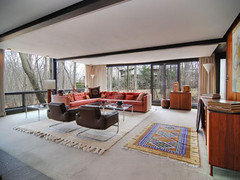
The Vanna Venturi house. 1962.Prototype post modern.

Kahn's Esherick house and Fisher house. Brutalist, universally misunderstood, universally hated as a movement, and often not well executed. 1960s-70s
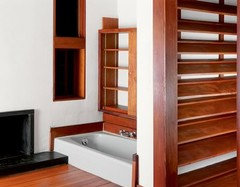


Minimalism -mid 80s to present
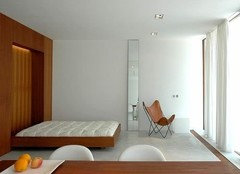
Architect self-designed, urban rehab. regional, popular in depressed neighborhoods 1960s to present.
{{gwi:1803792}}
{{gwi:1803795}}Eco Houses, Rammed earth/Bale houses, the "new Small house"--these are all movements but take on various regional vernacular and revival styles.
So, one reason for revivals is, that for the most part, the general public has not embraced any one of the above movements for residential housing.
plllog
12 years agolast modified: 9 years agoNope. What the general public have embraced is little boxes. :)
Is it better to have a cheap, stylish house in a new subdivision or a one off, artisan built, infill house that costs four times as much?
One of the reasons that the general public haven't embraced many of the design trends is that the marketeers can't figure out how to sell them. They sold the Avocado Green/Harvest Gold/Orange shag thing to the masses, who soon grew tired of the cheap, tract home renditions, and had trouble selling them.
They sold them the mauve carpet, heavy stone or glass tables, uncomfortable seating and mirrored everything in the '80's, and people got tired of them and had trouble selling them.
The "industrial" chic of the '80's fared better. The black ash, black leather, grids, stainless steel, etc., are still around. It's pretty neutral.
They were able to sell the Mediterranean chic of the '90's to the point where you could get Italianate stone (concrete) railings for cheap at a big box store and have it be all out of scale with the rest of the tract house. This particular style suits So. Cal. I don't know how well it's aging elsewhere. People have gotten tired of the vines, acanthus leaves, and Venetian plaster, but that also isn't that hard to sell. Yet.
I think people are a lot more educated about design now than they were before a bazillion cable channels and internet sites. More sophisticated and more neutral things are trending well exactly because they're not such strong statements as the '70's wood, shag and velvet, or the '80's dark and flashy. People are, wisely, looking for things they won't tire of so quickly, and that will be easier to update and sell.
The biggest change I've seen recently is in wall paint. It wasn't that long ago that "fresh" colors, clear beachy colors, were all the rage. Now earthier colors, like a darker, more complex green (dare I invoke the alligator pear?), and burnt orange is also seen. Sort of '70's revisted colors, but more adult, less peppy. The furniture that went with the first group transitions well to the current colors, however, which, for most people, who don't have money to burn redoing over and over, is a really good thing.
Also explains why everyone hates the new Restoration Hardware. They make these case goods and tables in China with unskilled labor, and cover up the manufacturing faults with distracting finishes. Then they think they can go minimal on the finishes? Not just distressed but incomplete? People might have been okay with the Emperor's Bermuda shorts, but they're not buying the new clothes.
lavender_lass
12 years agolast modified: 9 years agoThe organic modern and pod houses...look a lot like a Hobbit house. Doesn't the Hobbit house combine the best of story book and earth homes? I like the curved fireplaces, carved wood and built in benches, myself :)
I know they're based on the book, but maybe Marcolo is on to something, when it comes to set designers being the new architects. At least we'd end up with something different and possibly even fun!
lavender_lass
12 years agolast modified: 9 years agoCawaps- LOL! Well, if you don't have room for the pool table island and Rat Pack mural...you can still watch White Collar and see the 'new' 60's Rat Pack style.
The main character "inherits" many awesome 60's suits and clothes, including the fedora. It's a fun show on USA...check out the trailer, at the bottom of the link :)
Here is a link that might be useful: White Collar
palimpsest
Original Author12 years agolast modified: 9 years agop111og
But vernacular modernism would not be expensive or a one-off, if people accepted it more. There would be economies of scale. Some of the true modernist/minimal features--very little trim, full height doors, are expensive because there is no trim to cover gaps and if the ceiling isn't perfectly flat, the door scrapes. But these things can be managed or slightly modified to get the same general effect less expensively. I don't think the cheap subdivision houses are stylish at all for the most part, I think they are depressing--because they are a mishmash of too many disparate items on someone's checklist.
I would live in that pictured 60s architect vernacular with the blue orgy pit bathroom before I lived in a neo-revival facaded contemporary-interiored drywall box. And I think that house is kinda ugly. But at least it has a vision.
plllog
12 years agolast modified: 9 years agoPalimpsest, that would be the marketing thing. It's selling people on the look. It's hard to sell modernist/minimalism, especially because a lot of it is really uncomfortable. People experience the bad stuff in public places and the mass producers can't sell somewhat comfier versions. And ogees are comfier to the eyes than no trim.
Re the subdivisions--here I'm talking about current ones--that might be true in your area. In a lot of places, they have the latest design trends, agreed often as a mishmash, but done up by designers to have whatever is current in/in the stores.
You mustn't compare your own highly educated and refined tastes to that of most budget conscious home buyers. While you're looking for architectural significance, point of view, and a well designed way of life, your average suburban family wants a space that they can afford that gives them some elbow room, with good closet space and garage space, flow, entertaining space, and a whizbang master bedroom, even at the expense of the kids' rooms (I hate this last particular trend).
For "design", they want nice curb appeal, neutral fixtures that they can decorate around, neutral interior architecture that their existing furniture will fit into, and into which they can picture a whole new Pottery Barn room, and the latest de rigueur finishes like granite tops and vessel sinks. It doesn't matter if it's cheap stuff, so long as it goes with the Pottery Barn aspirations.
Remember, these are people who want a brand new house because it's brand new. I was taught that a brand new house would take a lot of fixing as the systems shake down. At which point, one might as well fix up a fifty year old house that may need new wiring, but has settled in, has mature landscaping and a functioning neighborhood.
The "neo-revival facaded contemporary-interiored drywall box" is exactly what a lot of people want most, and for the people who would rather have a Craftsman bungalow, or a saltbox, it's what they can afford because it costs masses less to build masses of the same little boxes made of ticky tacky.
I think maybe you should come out to California too. We have lots of modernist houses that you could be happy in. :) High cost of living, though, so maybe not in the budget... But you could save one from crown molding and swagged valances.
northcarolina
12 years agolast modified: 9 years agoDecorated refrigerators, did someone say? I saw this one online today.
{{gwi:1918255}}
I think the genius of this is that the black sides coordinate so well with the water/ice dispenser on the front, so it'll look OK even if you don't build it in.
harrimann
12 years agolast modified: 9 years agoThe trouble with a glass box is there's no place to put the TV. ;-)
The photos of the Kahn houses make me drool.
I'm perusing real estate ads from the prospective city where I might move, and I notice that many real estate sites have a "Built after" option on their search engines. I'd prefer a "Built before" option because I am not interested in a house built after 1969 (and I'm skeptical about the 1960s houses). Somewhere along the line, houses started being built as disposable items. McMansions make me twitchy, but I'll agree that's what most people want.
marcolo
12 years agolast modified: 9 years agoOK. Too many good comments to respond to coherently. So you get this:
Marcolo, come to L.A. We have a whole genre of houses that were designed by set builders during off times. They're pretty classic, but well designed. And the sub-genre of "Storybook" houses are darned cute!
Yes, I know! I love them. And in a weird convergence of ideas with lavender's post below yours, the house I've always wanted to live in is the movie version of Bag End.
When I wear my Smiths Hatful of Hollow t-shirt now, I have to tell all the emo boys I bought it new.
For some reason Morrisey likes to come to Boston a lot. We have a great venue for '80s music--a big permanent open-air tent on the water, with very convenient beer stands and extremely clean bathrooms. It's perfect for us geezers when the B-52s come to town.
Anyway, I have to point out, pal--you baited us. You've shown us some interesting counterexamples of '80s design in this thread. But in fact, in your original post, all the kitchen finishes you showed came from the classic, hideous, 80s ticky tacky builder's kitchen, with shiny goldie phonie colonie brass, plus (gag) pickled wood and lots of beige. You knew what you were doing.
One of the reasons that the general public haven't embraced many of the design trends is that the marketeers can't figure out how to sell them.
Yes, because in other industries the marketing world has figured out this thing called "narrative selling." It's not about features and benefits and PowerPoints, it's about being able to tell a story. By the time you're done, your customer is there with you. The purchase is simply inevitable.
And look where that puts us--back to my comments about set designers and kitchen kits. In the '80s, those sleek kitchens were sold as: let's be futuristic, we're going to make everything new right now, listen to the New Wave thump. That's why people bought them. They weren't sold cabinets, they were sold on the idea of becoming the Terminator, or Gordon Gekko, and then naturally they needed a set design as backdrop to their new part.
Today the only storyline comes from House Hunters. "Real estate is an investment. Nuteral (sic) will appeal to buyers!" Yes, let's all just set motionless in our houses for ten years waiting for the next buyer to walk in. Don't live life, just stage it. That's a compelling and fascinating story for sure.
plllog
12 years agolast modified: 9 years agoMarcolo, have you ever seen/played Dream Chronicles? It's sort of Bag Eng gone Art Nouveau splendor.
palimpsest
Original Author12 years agolast modified: 9 years ago"Yes, let's all just set motionless in our houses for ten years waiting for the next buyer to walk in. Don't live life, just stage it. That's a compelling and fascinating story for sure."
And it's a depressing story. The change came about when houses ceased to be primarily a place to live to "The Biggest Investment you will ever make", and people started viewing it as their investment ladder, their only investment, their retirement fund.
Culturally we have become afraid of innovation (where would that have left the Victorians?) Afraid if commitment (what if I grow tired of it?) Afraid of strangers (what will the next buyer think?)
I understand that mobility plays a role in this, people don't stay in their houses as long as they would like...but enough, already. I am was getting to the point where I liked looking at real estate that was exuberantly "ugly", because at least the owners stuck to their guns. There is something to say for individualistic houses like this:
Here is a link that might be useful: The house that Beekeeper's wife posted
palimpsest
Original Author12 years agolast modified: 9 years agoplllog
12 years agolast modified: 9 years agoPalimpsest, I think you're right on the money [cough] about the "investment" and the mobility. "Resale" never used to be a watchword, but it's very important now, as in people really do sell their houses before the houses are worn out. I think "salable" should be important, as in up to code, inc. an oven, heater, windows, etc., necessary for a CO, but beyond that one could forego the nth thousand realized at sale for a lot of happy time in a personalized and lovely space in the meantime--but I'm not overextended. That is, I think a missing component to this is the change of housing being not more than a third of one's income to often being well over half, these decisions toward resale bang for buck truly are driven by the necessity to stave off financial ruin.
What's also unfortunate is that people get seduced by conflicting platitudes. Renting, and using the difference in the cost of homeownership and the rent to invest wisely, will have one better off in the long run unless one lucks into the top of a bubble of an overpriced market at the time of sale. But people get caught up in the idea of building equity instead of "wasting" rent, not figuring into it how little of their payment actually gets kept as opposed to paying interest. You have to stay put awhile to start building equity. People get caught up in the tax deduction for the interest, but most folks don't have enough of the right kind of income for that to be a real offset. For most folks, the deduction is a pretty small fraction of what they're paying in interest.
So, financial reality is squeezing them, aspiration is squeezing them, and every time they move they start paying all interest again. Speculation (buying low, selling high), can help. Some people who do it well can get rich, and others who just time their moves well can make it work for them, but plenty of people just sink under the weight of this "investment". Even without crooked bankers and irresponsible secondary mortgage markets.
sas95
12 years agolast modified: 9 years agoYes, what p111og said. There is such a false notion in this country that you have to own your own home. That renting is wasteful and that people won't deem you "successful" if you rent. That your house is not just a place to live, it's your money-making machine. And the feeling of many that they are somehow "entitled" to own a home, even if they can't really afford to own one. There is so much pressure to own in this society, and to own at a certain level.
When I was growing up, people rented for quite a long time after finishing school, then bought modest starter homes and gradually traded up if they were so inclined. Now you watch HGTV and see kids right out of school insisting not only on purchasing their own home immediately, but also that home must have granite and stainless in a so-called state of the art kitchen. Which you know they just can't afford. Part of it is that many are not old enough to have seen a seriously down real estate market, but it's not just younger people who have bought into all of this.
But back to the original subject, I'm in my early 50's and just bought my first house last year. I moved around quite a bit and didn't feel like getting into the buying/selling thing for each move. We looked for about 4 years before finding something we loved and knew we'd want to stay in. At the closing, when I was talking to our RE agent about all the color I wanted to do in our kitchen and baths, she warned me not to do color-- I should go neutral for resale. Resale? Sheesh, I'd just bought the place. It's a vicious circle.
writersblock (9b/10a)
12 years agolast modified: 9 years agoYes, there's a great deal of truth in these last few posts (although I certainly don't think it can be said of anyone alive in the US today that they haven't see a seriously down real estate market). I rented for years although I could easily have afforded to buy, just because mortgages, marriage, and bracelets all give me the same trapped feeling, but I took even more heck over not owning than I did over not marrying. "Gosh, no matter how little I made, I always managed to own something," or (during the frenzy), "Aren't you sorry you didn't buy your place? You'd better buy something now, because it will only continue to go up," and so on.
As for the resale bogey, it's kind of ironic--just read the "don't want trends" thread for a good example of how totally they've got people paralyzed about that.
sas95
12 years agolast modified: 9 years agoI took even more heck over not owning than I did over not marrying.
Tell me about it. During the boom people thought I was a complete moron for renting. After the downturn I suddenly turned into a savant.
palimpsest
Original Author12 years agolast modified: 9 years agoI was told I was stupid for not having a mortgage on a condo I owned.
John Liu
12 years agolast modified: 9 years agoI think a little part of the problem is that the modern, sleek, minimalist, interesting home design tends to be used in urban apartments and condominiums. Higher-end ones, to be sure. But for many people, there is a difference between a multi-family dwelling and a single-family house. The latter is supposed to be more substantial, more valuable, more permanent than the latter. So it is harder, for many, to be different, daring, untraditional in a ''house''.
Another issue, I believe, has to do with the character of the housing stock in different parts of the country. I'll apologize in advance, as I will sound quite elitist in what follows. But, offensive as it may be, here goes. People are more likely to desire, pursue, and achieve avant-garde, highly designed, unusual homes in areas where, on average, people are more educated, wealthier, and more surrounded by art, culture, international influences, and other inspiration.
In the US, that tends to mean certain geographical areas - primarily some large cities on the East and West Coast, plus some other spots. By and large, the housing stock in those places is kinda old, not old like Europe old, but old like 60 to 100+ years old. Think Manhattan, Boston, San Francisco, even in the more upscale parts of Los Angeles much of the housing dates from 1920-1940.
So, how easy is it to gut out a 140 year-old Boston brownstone, a 90 year-old San Francisco Russian Hill Victorian, a 100 year-old Portland four-square, a 80 year-old L.A. Hollywood Spanish-style, and put in a forward-looking interior such as shown in some of the above pictures? Not that easy, there's a lot of barriers, not the least of which is being ''true to the house''. Easier when building new houses, but how many new houses get built every decade on Russian Hill or in Cambridge or name your high-education, high-affluence, high-culture area of those cities?
palimpsest
Original Author12 years agolast modified: 9 years agoI agree to an extent.
There is only one suburb here that is known for its concentration of Modernist houses, and the smattering of other modernist houses that exist also occur in certain suburban zip codes.
In the small town where I grew up, there was, at one time, a large corporate influence (Read 'college educated executives from out of town'.) So, during a booming post war period, my town got a brutalist bank (complete with Warren Platner and Saarinen furniture in the lobby), a country club designed by a pupil of Frank Lloyd Wright (admittedly a weak and not very practical imitation), and an organic-modern extended care facility.
From the get-go, no one there has ever really understood these buildings. The last time I was in the country club, the peacock clock was gone, the mahogany boxed and soffitted ceiling with shoji light fixtures had been covered with drywall and fitted with brass and glass fixtures that belong in a Greek Diner, there was a large colonial brass chandelier in the main dining room, and the Wright-esque built in sofas and knock off Saarinen Executive dining chairs had been replaced with Banquet room style furniture.
It went from being an aging 1960s time capsule (and not the best example of one) to an absolute monstrosity. The dining room has the shape of an over turned boat hull with a ribbon of windows all around, and its now tricked out colonial-traditional style despite this. Everyone loves it.
Likewise the organic modern nursing facility is tricked out with wallpaper and borders and strange victorianesque seating groups, and the bank has corporate Queen Anne all over the place. They basically took three dated and not outstanding public spaces and made them *really* hideous through a lack of understanding.
-------But 100+ year old houses get gutted here every day and turned into something contemporary on the inside, and a rehab that is "true to the house" is much rarer unless it's some kind of full-on restoration.
Contemporary, however, differs from modernism and most of these are a mixed bag of design vocabulary built to meet certain criteria (often implying traditional detailing to some degree) since they are spec houses. There is one re-developer that seems to be rehabbing in a more purely modernist way.
suzanne_sl
12 years agolast modified: 9 years agoWell great! After days of reading this post, I finally figure out that SGTG is referencing a kitchen set in an actual movie! Just in case anyone else is as clueless as I am, here's some pics:
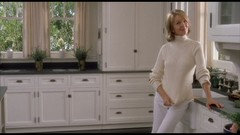
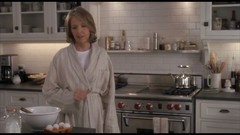

I left out the one with the massive 'fridge because it also features Jack Nicholson in his traipsing through in his underpants. Eew. If you want to see that one (or the rest of the kitchen and house), go to the site I borrowed these from.Here is a link that might be useful: The rest of the pix
plllog
12 years agolast modified: 9 years agoWell, John, at least in L.A. there's California rebirth. :) Between fires and floods, some of the tony houses get a foundation up redo every 15 years (why do they let people live at the base of Las Flores Canyon?). :)
One can also start with (and save from gussifying folks who love the location but hate the architecture) one of the good lot of MCM's, Neutras, Lautners, a few Wrights, and at least one Koenig, plus a plethora of anonymous brutalist-lite atrocities. Mind you, I'd rather live in a Williams, or even a Greene and Greene, but then I'm more of a romantic.
lavender_lass
12 years agolast modified: 9 years agoIt's a pretty kitchen, but did she have a maid? Those counters seem to go on forever!
formerlyflorantha
12 years agolast modified: 9 years agooff topic...
Have seen references to the power of the "Something's Got to Give" kitchen over the two years I've been reading the GW Kitchens Forum, usually in glowing terms. Seeing these photos again reminds me that I never really fell in love with that kitchen in the movie and always thought it represented "those" people who were unlike me. The best thing in the room to me was the art on the wall and in the dining room it was the display cabinets, mostly because I like displays of china and I like sit-down dinners.Seems to me the movie kitchen was designed with islands to allow long shots of people who would seem to be purposefully occupied and conversing despite the size of the room and the color coordination with the white clothes, white pebble woman. I don't think I could be very happy in it, esp if I were a single woman.
lavender_lass
12 years agolast modified: 9 years agoThe Something's Got to Give house is huge! I haven't seen the movie, but that's a lot of house for one woman...does she give a lot of parties?
Mcmjilly already posted a link, but I thought I'd post a few pictures from Baby Boom (same actress, same writer, from 1987). This is much more my style...and I just can't imagine Jack Nicholson being as wonderful as Sam Shepherd :)
{{gwi:1918260}}
{{gwi:1918261}}
{{gwi:1918262}}
Here is a link that might be useful: Baby Boom House
shelayne
12 years agolast modified: 9 years agoand I just can't imagine Jack Nicholson being as wonderful as Sam Shepherd :)
He wasn't. In "Something's Gotta Give", the character played by Jack Nicholson was an overgrown playboy, arrogant jerk, who looked at women as nothing more than arm candy and playthings. And I won't say anything more about that in case you ever want to watch the movie.
I have seen SGG many, many times, and I am still in love with that whole house. Inside and out. *sigh*
lavender_lass
12 years agolast modified: 9 years agoShelayne- I doubt I'll watch SGG, but Baby Boom is one of my favorites...and Sam Shepherd is wonderful :)
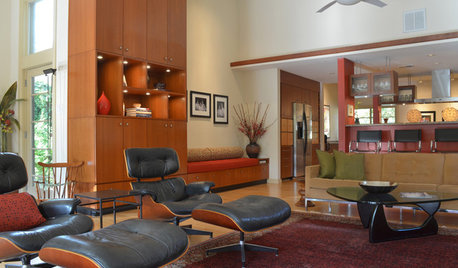
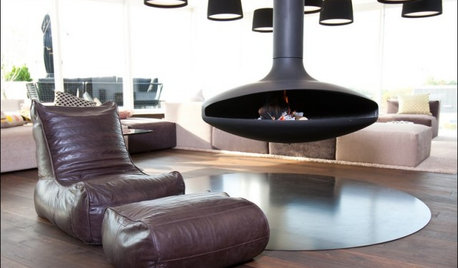
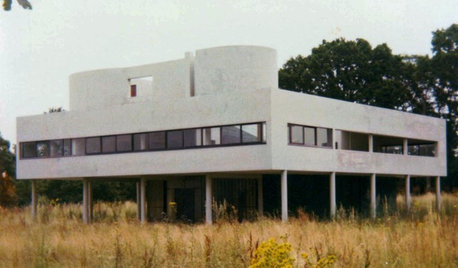
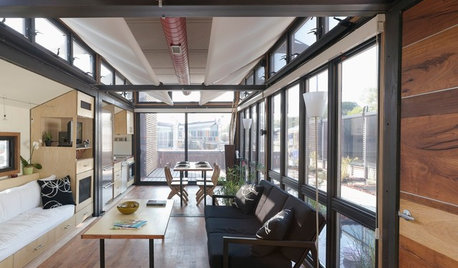
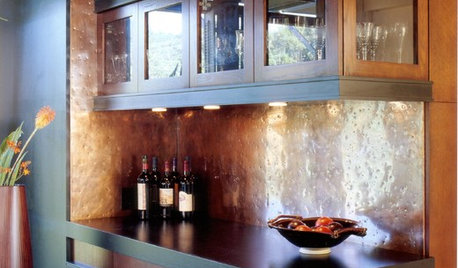
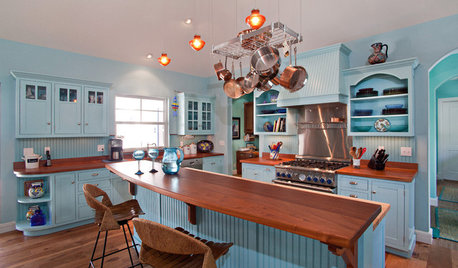
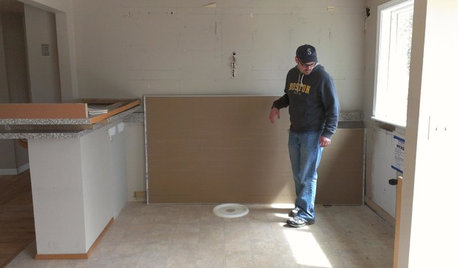

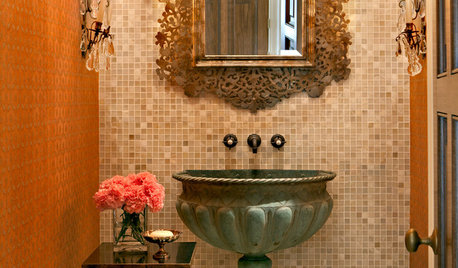
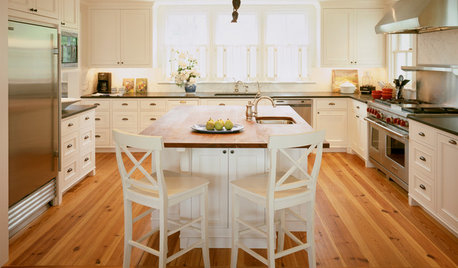







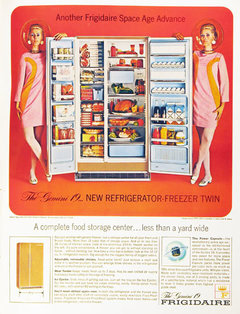
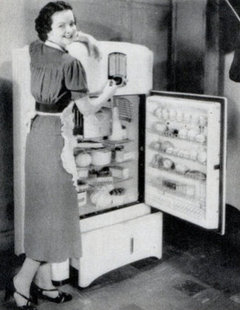


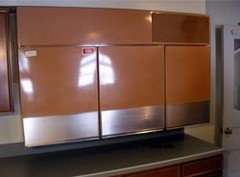
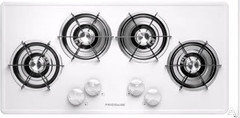


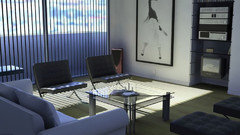



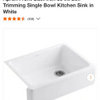



writersblock (9b/10a)